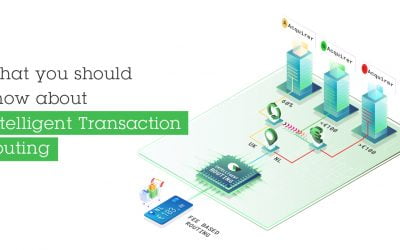
Difference between a payment gateway and payment processor
Understanding the Basics of a Payment Process
Before we delve into the specifics, it is essential to understand how an online payment is completed to better understand the role of each component involved. There are essentially five parties involved in such transactions. These are –
- The merchant – Offers a service or a product that the potential customer would be willing to pay for. The relationship between the merchant and a customer willing to pay for a product can be understood as the starting point for an online payment transaction.
- The customer – The next party is the customer themselves. They would initiate a transaction of an over-the-web purchase by specifying or choosing the products/services they are willing to pay for. This shall be followed by them entering the requisite payment information.
- The issuing bank, i.e. the bank that issued the customer’s credit or debit card – This bank hosts a customer’s bank account and has thus issued a credit or debit card to the customer. The information entered for initiating the transaction will be based on this account.
- The acquiring bank i.e., the bank that shall collect the funds from the issuing bank – This bank hosts a merchant’s bank account and shall request the issuing bank for mobilising the said amount when a transaction has to go through. A merchant’s bank account lets one accept and process digital payments, including purchases made with credit cards, debit cards or any other form of electronic payment.
Credit card schemes – A card scheme is essentially a central payment network that incorporates the usage of credit/debit cards to process payments. Transactions in it are managed according to a fixed set of procedures and arrangements, including related operations and clearances. They basically facilitate the use of the said cards with third parties.
These are the five major parties that would necessarily be involved in an online payment transaction. There are other essential terms as well that must be well understood to further comprehend the process of an online payment transaction.
Point of sale (POS) – It is essentially the exact moment where a payment transaction is finalized, i.e. the moment when a customer tenders payment in exchange for goods/services. A credit card processing machine at a physical location that reads EMV chips in credit cards and then sends it through the payment processor can be considered as a point of sale. Although this is more applicable in an offline setting, the concept helps in understanding the role of online payment gateways.
Payment tokenization – It is the process of converting essential information, like a customer’s card number, into practically incomprehensible numbers, to provide extra security to such private information.
Payment processor – It is the service that conveys transaction information between the merchant, the issuing bank, and the acquiring bank.
Payment gateway – A payment gateway is actually equivalent to a POS system in online transactions. It encrypts and transmits information to the payment processor. It shall then receive authorization for the banks to move money from the customer’s account to the merchant’s account. Advantages of payment gateway providers with modern operations also include provision for features like integrations into different e-commerce platforms and APIs to perform such transactions.
We shall further look into a detailed explanation of these two necessary components of an online payment transaction.
Payment Gateway and Payment Processor – Specific Roles, The Differences
Payment Processor – Purpose and Function
More commonly known as Payment service providers (PSPs), payment processors essentially transmit the data involved in a payment transaction among the four major parties that are part of the transaction. This would include the customer, the merchant, customer’s bank and the acquirer bank. Payment processors generally, will also provide merchants with the physical equipment needed to accept card present-based transactions. They are further involved in helping the businesses to create a merchant account, either in-house or with a third-party merchant services provider.
Payment Gateway – Purpose and Function
A payment gateway is the virtual equivalent of a point of sale (POS) terminal. In a physical setting these are generally credit card readers or similar machines that are available at a grocery or with a cashier. The major difference is that POS terminals are designed for in-person transactions that are made with physical cards. Online payment gateways on the other hand, allow for card-not-present (CNP) transactions. The information associated with a card or a customer’s account in this case is entered on the website, in a hosted checkout form, or on a mobile app handled by a merchant. This makes such payment gateways a necessity for e-commerce platforms.
What is the primary difference between a payment gateway and payment processor?
The fundamental difference between a payment gateway and payment processor is that a payment gateway captures and then relays card’s data along with a customer’s other payment details to the payment processor. It also communicates the transaction status between the involved parties i.e., approvals or rejections to the merchant and the customer. Payment processors, as the name suggests, work behind the scenes by securely routing data among all the different parties all the way from mobilising funds from a customer’s bank account to its settlement in a merchant’s bank account. A payment processor helps prevent payment gateway fraud and securely makes this transaction between two parties possible.
Along with these two essential components, there is another essential feature specifically for merchants to become eligible for accepting online payments. An e-commerce merchant needs a Secure Sockets Layer (SSL) certificate for the said purpose. This digital certificate creates a secure connection between a merchant’s site and the customers’ browser by encrypting any data sent or received. It is used in the provision of general security and prevention of payment gateway fraud or any other such issue. Attainment of an SSL certificate appends an “s” to the “http” in your website (e.g., “https”) which then signals users that your site is secure. This generally leads to higher sales, more trust and better customer retainment.
Which one is necessary for my business?
As we’ve discussed, having both an online payment gateway and payment processor is essential for an e-commerce merchant or business. This is because of the major roles that both of these instruments play in the process of said transactions. The payment gateway is in itself the beginning and end of a transaction, where the customer will enter their credit card/bank account information and receive an approval or denial i.e., know about the status of the transaction. The payment processor on the other hand conveys essential information between the customer’s bank and the merchant acquirer, or acquiring bank. Every payment transaction processed online needs both.
As a suggestive measure, it is advisable to select a payment gateway provider that aids you with setting up a merchant account as well. Advantages of payment gateway providers operating in this manner, is that they can securely process integrated payments, ease reconciliation, reduce errors and speed up general transaction processing.
Leave your questions
FEATURED PAGES
What you should know about Intelligent Transaction Routing (ITR)
What you should know about Intelligent Transaction Routing (ITR) In 2021, e-commerce is predicted to account for 18.1% of the global retail sales, one of the highest percentages in a single year. As international e-commerce offers many opportunities for global...
Payment Gateway Platform Info Paper
Thank You Contact
THANK YOU CONTACT -WLPAYMENTSTHANK YOU For requesting a demo, we will be in contact shortly.Connect with us


